Betty Harris
by Pete Nickols
 Back in the sixties, soul ‘anoraks’ (myself included), who already treasured and sought out the works of the more obscure and emotive singers, absolutely revered Betty Harris (and, then again, soul-wise, I guess I still do!).
Back in the sixties, soul ‘anoraks’ (myself included), who already treasured and sought out the works of the more obscure and emotive singers, absolutely revered Betty Harris (and, then again, soul-wise, I guess I still do!).
The couple of publicity shots that existed back then showed that she looked great, her gospelly interpretive voice was second-to-none and her best-known material was stunning, chiefly because it was chosen by top-flight producers like Bert Berns and Allen Tousssaint. But just as intriguingly, she was then something of a ‘mystery woman’. No-one really knew anything about her. Rumours circulated that she had begun as Big Maybelle’s ‘maid’ (did travelling black women entertainers of the late-50’s really take ‘maids’ with them?). Then someone said that, after her Sansu/SSS recordings, she had retired to become a truck-driver (did lissom black female ex-singers still only about 30 years of age really drive giant, freeway-eating Mack and Kenwood trucks – maybe these days, but surely not in early-70’s America!).
Today, thanks to researchers and the re-surfaced Betty herself, we certainly know much more about her - and that includes the fact that both of the above rumours were false, although each had truthful associations, as we shall see.
However, some mysteries and contradictory information remain. Whilst it’s clear that Betty was born in Orlando, Florida, many potted biographies quote a 1941 or a 1943 date. Even in David Cole’s excellent interview/article (‘In The Basement’ magazine No.32, October 2003), Betty’s birthdate is given as 9 September 1943 (which is repeated on a current Harris-related web-site). However, only a few months later, on 19th July 2004, Betty herself stated in a telephone interview with Amy Gold: “I wasn't born in the '40s at all. I was born in '39.” My opinion is that a woman may lie about her age to make herself appear younger but she would never lie (especially to another woman!) in such a way as to make herself look older! Therefore I reckon Betty Harris was born in 1939 – I rest my case!
This date is also in line with Wikipedia’s biography, yet that not-always-reliable source gives Betty’s surname as Harridick. It’s just possible this might be the married surname Betty acquired after her retirement from the music scene at the end of the 60’s as it was the guy who then became her husband who apparently ran a trucking business, hence giving rise to the false rumours about Betty herself driving such vehicles for a living. However, her true birth-surname was certainly Crews, as stated not just in the Cole interview but in a 2004 article about her younger sister, the operatic-quality spinto-soprano and now Fort Pierce, Florida-based evangelist, Sybil Maria Crews Young.
However, there is another possibility. When Betty was still only about 18 years of age, it seems she had a son, Selwyn T. Crews. (This chronology is based on the intro to the Amy Gold interview in 2004 in which Selwyn – sometimes called Tony and now apparently living in Atlanta - was said to then be 47 years of age). If Betty briefly married the father and if the father’s surname had been Harridick this could have led to her later adopting the ‘truncated’ name of Harris. When Betty joined the Hearts vocal group in around early 1958 (see later), she was still using the name Betty Crews but certainly something around that time must have prompted her to change her surname to Harris as this had already occurred by the time of her early-60’s first solo recording (see later). However all this begs one final question: how did Betty’s son inherit her own surname of Crews as opposed to that of his father (whoever he was)? Whether or not Betty married the father, perhaps either she ‘on her own’ (or perhaps close relations) raised the baby boy and ‘awarded’ him the family surname in place of that of his father?
When Betty left the music scene in the late 60’s her son would have been approaching his teenage years. She would then soon marry but her daughter, Christina would not arrive until about 1982, when Betty was in her early forties (this chronology is also based on the 2004 Amy Gold piece when Christina was said to be then merely 22 years of age and, according to the Cole interview published only a few months earlier, then attending university, married with a surname of Clemons and the mother of a young baby).
 Anyway, what’s most important perhaps is Betty’s wonderful musical heritage and we should instead concentrate on that and how she came to take up secular singing.
Anyway, what’s most important perhaps is Betty’s wonderful musical heritage and we should instead concentrate on that and how she came to take up secular singing.
Betty’s own father, a minister in the Pentecostal church, was the Rev. Rufus C. Crews, while her missionary (and later also Overseer/Miinister) mother was Winifred Crews. When Betty was about 3 years of age, her family - which included her non-musical brother Donnell but did not yet include her younger sister, Sybil Maria - moved from Orlando Fla. to Dothan in Alabama where her father took on new church responsibilities. Soon, he and his wife would become founders of Pentecostal Deliverance Ministries in both Dothan and Cottonwood.
Betty says her father had a loud tenor voice which could dominate his church and he was apparently also capable of hitting very high notes (an ability clearly his youngest daughter Sybil inherited). Indeed, it’s claimed he could play five instruments and had a three-octave vocal range. Unusually, he regularly indulged in the generally ‘white church’ vocal technique termed ‘Sacred Heart’, a form of accapella shape-note singing. However, it seems the Rev. Crews’ influence soon also became a magnet for touring black gospel stars, whose appearances he occasionally ‘promoted’ locally.
So it was no surprise that all of Betty’s early singing was done in church and, by the age of about 12, she had already fronted a choir supporting the big-voiced gospel star Brother Joe May, known as the ‘Thunderbolt of the Middle-West’. Betty would also meet the likes of Sister Rosetta Tharpe, Sam Cooke & the Soul Stirrers, The Dixie Hummingbirds, both groups of Blind Boys and the The Caravans, whom she idolised, although she soon realised harmony singing was not for her. Nor was the ‘gospel life’. She says: “I knew all of the gospel singers and I knew how they lived, and I just really didn't want to ... I didn't see myself making money. And (so) I went ‘secular’."
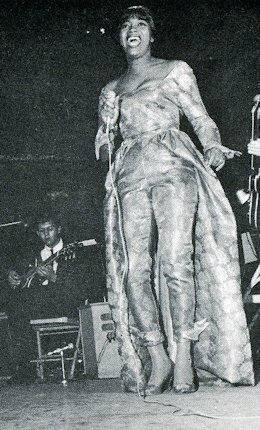 Betty left home at a very early age seeking that secular singing career. This was a huge and audacious step for a young girl from such a strict church background and clearly must have caused quite a ‘family split’ at the time. Betty says: “My parents were gospel preachers. I mean, my house was strict, very strict. They were holiness preachers, so you didn't play rhythm and blues in the house, they didn’t believe in that.”
Betty left home at a very early age seeking that secular singing career. This was a huge and audacious step for a young girl from such a strict church background and clearly must have caused quite a ‘family split’ at the time. Betty says: “My parents were gospel preachers. I mean, my house was strict, very strict. They were holiness preachers, so you didn't play rhythm and blues in the house, they didn’t believe in that.”
Her parents remained in their church-dominated world in Alabama and in 2004 Betty reported that, although her father was by then deceased, her mother was then a fit 92 year-old ‘overseer’, still in charge of four Dothan churches. Sadly her mother too has since ‘passed’ and Betty, who had been looking after her, moved south temporarily to Atlanta for a few years from her Connecticut home so that her mother could spend her last days closer to the churches which she helped found.
Anyway, back in the 50’s, the brazen teenaged Betty headed off alone to far-flung New York to try to begin a singing career but first she took employment as a maid with a Long Island family thinking this would at least put a roof over her head (this was the ‘maid’ reference which later led to the false claims that Betty had held down just such a job with Big Maybelle, a singer whom she would not actually encounter for a year or two yet - see later). However, Betty says she wasn’t a maid for more than a week as she was offered a job singing at the nearby Celebrity Club in Freeport.
She was soon ‘discovered’ by J&S label-owner Zell Sanders, one of the few early black women entrepreneurs in the music biz. Zell got Betty to fill-in at a club she owned in Hempstead, Long Island, where she had just fired another girl singer. The show there at the time featured Johnnie & Joe, already with hits for Chess ‘under their belt’, Johnnie being Zell Sanders’ daughter, Johnnielouise Richardson, later of the Jaynetts.
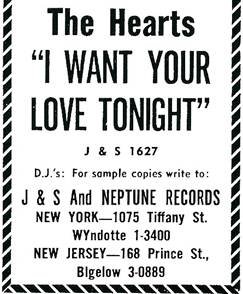 Zell had then also recently fired virtually the entire Hearts vocal group who recorded for her J&S record label and, after failing to replace them en masse with another existing group, the Bouquets, she asked Betty to join with Mandy Hopper, Lezli and Mary Green, Ann King and earlier member Theresa Chatman to form a new incarnation of the Hearts.
Zell had then also recently fired virtually the entire Hearts vocal group who recorded for her J&S record label and, after failing to replace them en masse with another existing group, the Bouquets, she asked Betty to join with Mandy Hopper, Lezli and Mary Green, Ann King and earlier member Theresa Chatman to form a new incarnation of the Hearts.
Betty takes up the story: “I was too young to be away from home. So I left Long Island and went to live with (Zell). She became like a mother to me – very protective. I worked with the (Hearts) for a while and played some shows in New Jersey. I don’t remember the songs I recorded with them at all (she may have sung harmony on other recordings but Betty takes lead on just one side, namely the repetitive teen-slanted item “Like Later Baby”, released on J&S 1626 in October 1958, the flip of “I Want Your Love Tonight” – J&S 1627. The track is included on the 2006 UK Ace CDCHD 1089 release “Baby Washington And The Hearts”); but I was not cut out to be a group member. I wasn’t into harmony singing. When my spell with the Hearts finished, (Zell) took me all the way back home to Alabama; but she didn’t realise how determined to sing I was. Within a few weeks I was off again.”
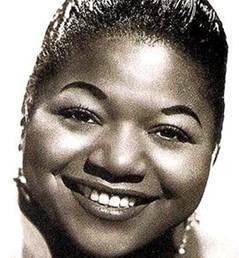 It was some time after her return to the Big Apple that Betty would seek out the aptly-named powerhouse singer Big Maybelle, who was performing at Harlem’s famed Apollo Theater.
It was some time after her return to the Big Apple that Betty would seek out the aptly-named powerhouse singer Big Maybelle, who was performing at Harlem’s famed Apollo Theater.
Betty says: “If you listen to Big Maybelle's voice, you get the idea that this is a big woman. When you listen to mine, you would think I was a big woman and I'm not. Never have been. And when I realized that that voice was about the closest thing to ‘me’ that I had heard, I went to see her at the Apollo (that was when I was around, oh I guess, maybe 19) and I sat through 3 or 4 shows. And the way she handled the audience, the way she sang, how she told jokes, the whole persona on stage fascinated me. So after the show I went back and I met her. I had a voice and some control, but I realized I needed more. I told her what I needed, and she allowed me to go on tour with her. I watched her night after night, and (during the) days she kept me in a mirror singing. She worked very hard with me until the time she felt I was ready to go on stage. Please let me say this. People pay a lot of money and spend years trying to get what I got from this woman. I want to thank Big Maybelle for her contributions to my career. I was not, repeat not, her maid. She was my teacher, my instructor and my coach. She was an entertainer that I really, really appreciated because she helped me when no one else would. I knew all about gospel. I knew what gospel singing was about, but when it came to R&B, I really didn't know the ropes.”
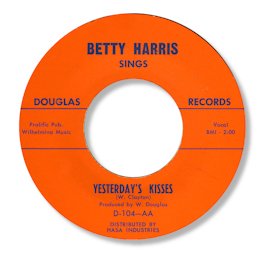 Anyway, it’s clear that Betty toured with Big Maybelle, taking lessons from her all the while, for some considerable time. This took her all over the States and at some point (some say after taking a break following the final show, in Chicago, of a nationwide Maybelle tour) she headed west to California where she cut her first solo 45 for Walter Douglas’ little-known Douglas label. Both of the featured songs were penned by Wilhelmina Clayton who, amongst other credits, wrote “So Little Time”, which Brook Benton would include on his 1964 Mercury MG 20886/SR 60886 album “Born To Sing The Blues”.
Anyway, it’s clear that Betty toured with Big Maybelle, taking lessons from her all the while, for some considerable time. This took her all over the States and at some point (some say after taking a break following the final show, in Chicago, of a nationwide Maybelle tour) she headed west to California where she cut her first solo 45 for Walter Douglas’ little-known Douglas label. Both of the featured songs were penned by Wilhelmina Clayton who, amongst other credits, wrote “So Little Time”, which Brook Benton would include on his 1964 Mercury MG 20886/SR 60886 album “Born To Sing The Blues”.
Sources vary about the date of Betty’s Douglas single and Betty herself doesn’t recall the details. 1960 is often given but if this particular visit to California was the same as the one during which she encountered the guy who would become her manager and would take her back to New York to introduce her to Bert Berns (see shortly), then the other, later date of 1962, often cited for this recording, would seem to be the more likely.
Betty’s release on Douglas 104 gave her own name greater prominence on the label than the company name itself. ![]() Yesterday’s Kisses is given ‘AA’ status while “Taking Care Of Business” gets just one ‘A’.
Yesterday’s Kisses is given ‘AA’ status while “Taking Care Of Business” gets just one ‘A’.
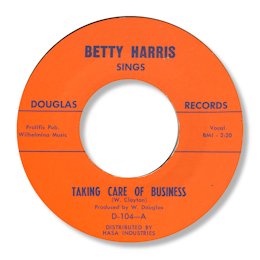 Betty’s voice had certainly matured since her Hearts ‘outing’ but the vocals seem in rather too high a register for complete comfort to my ear, although there is an assertive ‘attack’ to them somewhat akin to that on some of Etta James’ earlier work. The male back-up group seems competent enough (probably an established West Coast outfit) but, while the performances are not outstanding, they can certainly be regarded as ‘work in progress’.
Betty’s voice had certainly matured since her Hearts ‘outing’ but the vocals seem in rather too high a register for complete comfort to my ear, although there is an assertive ‘attack’ to them somewhat akin to that on some of Etta James’ earlier work. The male back-up group seems competent enough (probably an established West Coast outfit) but, while the performances are not outstanding, they can certainly be regarded as ‘work in progress’.
Very little is known about the Douglas label or its owner but, with the Harris release being numbered 104, one assumes there must have been a few other releases. I did find a publishing-related web-site which linked Walter’s name and that of his publishing company (“Prolific”, which appears on the labels) to a Fort Worth, Texas residential address, so maybe he retired down there.
Anyway, if the record was cut in 1962 it would have been around this time - and in California - that Betty encountered Solomon Burke and his then manager Marvin Leonard ‘Babe’ Chivian.
Chivian (born 24 August 1925) was a Philadephia-based car repairer-dealer and property speculator who, in 1959 offered Burke a red Lincoln Continental convertible if he would let him be his manager. The originally-gospel-only-singing and also Philadelphia-raised Burke had earlier failed to get his secular career off to a start via Herb Abramson’s Triumph logo as, at that time (late 1958), he had found he was still contracted to his old gospel label, Apollo. However, it seems that by 1959 this obstacle was out of the way and Burke duly signed up with Chivian who arranged for the singer to record for the local Philly-based Singular label, owned by WPEN disc jockey Edwin L. "Larry" Brown and the aptly-named Canadian-born vocal coach, Artie Singer. However in November 1960, after two commercially unsuccessful Singular 45s (one of which, “This Little Ring”, Chivian had apparently co-penned), ‘Babe’, as he was most often called, was recommended by Billboard’s Paul Ackerman to take Burke to meet with Jerry Wexler and Ahmet Ertegun. This he did and Solomon duly moved to the Atlantic label where, by December 1961, he had been put (initially reluctantly) under the production of Bert Berns. Of course, Berns won Burke over by cutting him successfully on the producer’s own fine song “Cry To Me” (Atlantic 2131), a No.5 R&B/No.44 Pop hit for Solomon which charted through the Spring of 1962, a song which would soon of course play a big part in Betty’s career.
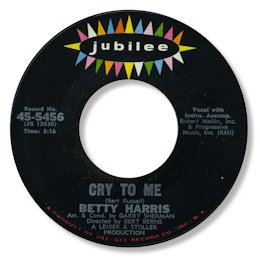 It seems Chivian (and presumably Burke too) were suitably impressed with Betty Harris’ potential and one can therefore see why, at this juncture, they would suggest she should go back with them to New York to audition specifically for Berns, although a pre-requisite was, of course, that Betty should first make ‘Babe’ Chivian her manager.
It seems Chivian (and presumably Burke too) were suitably impressed with Betty Harris’ potential and one can therefore see why, at this juncture, they would suggest she should go back with them to New York to audition specifically for Berns, although a pre-requisite was, of course, that Betty should first make ‘Babe’ Chivian her manager.
This was agreed and Betty duly returned to the Big Apple to meet with Berns, although at this time she would base herself in Philadelphia, probably because that was where ‘Babe’, her new manager, lived. Betty told David Cole: “Bert (Berns) was wonderful as far as I was concerned. He was the type of person you could easily work with, easily get to know.” Betty of course had heard Burke’s version of “Cry To Me” but told Berns she would have sung it ‘slower’ and with even more “expression and soul”. Berns asked her to sing it how she felt it and was so impressed that he called his arranger Garry Sherman down to work out a basic piano arrangement there and then.
The resultant July 1963 session was held at Bell Sound, New York before Betty had any kind of recording contract. The finished recording was achieved via the third ‘take’. The Sweet Inspirations (Cissy Houston, Dee Dee Warwick, Sylvia Shemwell and Estelle Brown) did back-ups, the sound also being beefed-up by some male singers, whom Betty recalls were from the Mitch Miller TV show. Although the label shows the recording to be a Leiber & Stoller Production, they were nowhere around and it was all down to Betty, Bert, Garry Sherman, a tight NY rhythm section, a white-shirt-and-bow-tie string section and the incomparable ‘Sweets’.
 For the first time on record, Betty calls upon her gospel pedigree to obtain the depth of feeling and expression inherent in such an emotionally-worded song, turning Burke’s certainly very good, faster-paced soul performance into an altogether much slower, deeper and more telling experience. Betty says: “By being young I only had so much experience of pain, or what I considered ‘blues’ to be about, but I ‘felt’ the lyrics. I knew how to reach deep in my soul and bring out all the pain and disappointment I felt. All my childhood feelings and wants came out in
For the first time on record, Betty calls upon her gospel pedigree to obtain the depth of feeling and expression inherent in such an emotionally-worded song, turning Burke’s certainly very good, faster-paced soul performance into an altogether much slower, deeper and more telling experience. Betty says: “By being young I only had so much experience of pain, or what I considered ‘blues’ to be about, but I ‘felt’ the lyrics. I knew how to reach deep in my soul and bring out all the pain and disappointment I felt. All my childhood feelings and wants came out in ![]() Cry To Me. I wanted to give the world something I could feel.” And she certainly did that!
Cry To Me. I wanted to give the world something I could feel.” And she certainly did that!
Berns had obviously spared no expense in bringing a top team together to obtain what he wanted from Betty and, in view particularly of his recent success for Atlantic with Burke, he hoped he would be able to lease his master to Jerry Wexler even if Chivian didn’t manage to actually get Betty signed to the label. However, in the event, Jerry ‘passed’, probably because his company had only just had a major hit with the song. So Bert offered it to Jerry Blaine at Jubilee, who snapped it up. Chivian also got Blaine to sign Betty to his label, the event being marked by a dinner in a swanky New York restaurant where Jerry Blaine’s son Steve gave Betty a French Poodle.
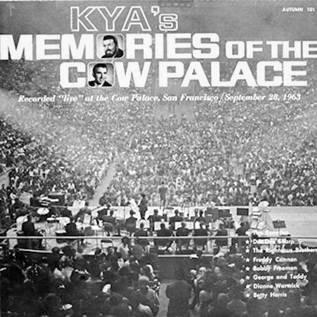 Betty’s superb reading of the song made No.10 R&B and No.23 Pop on Jubilee 5456, perhaps surprisingly a lower position than Burke’s more ‘commercial’ version in the Billboard R&B chart, yet a higher position in the usually more commercially-influenced Pop chart.
Betty’s superb reading of the song made No.10 R&B and No.23 Pop on Jubilee 5456, perhaps surprisingly a lower position than Burke’s more ‘commercial’ version in the Billboard R&B chart, yet a higher position in the usually more commercially-influenced Pop chart.
The overtly more ‘pop’, but still appealing Berns composition “I’ll Be A Liar” appeared on the flip.
Betty soon embarked on several promotional live performances and one such on 28 September 1963 (the very day of her record’s entry into the R&B chart) put her on a multi-act bill at San Francisco’s huge ‘Cow Palace’ auditorium, introduced by local Radio KWA dee-jays, Bob Mitchell and Tom Donahue.
Betty’s live version that day of ![]() Cry To Me in front of an orchestra conducted by Phil Spector was recorded by Autumn Records for their “Memories Of The Cow Palace” Autumn 101 LP (reissued in 1983 by Rhino on RNLP 105).
Cry To Me in front of an orchestra conducted by Phil Spector was recorded by Autumn Records for their “Memories Of The Cow Palace” Autumn 101 LP (reissued in 1983 by Rhino on RNLP 105).
Vocally, Betty gives her hit-song 110 percent, although the band unsurprisingly does not compare favourably with the New York musicians on her studio recording and, in particular, includes a rather poor trumpet-player. However, I agree with a review of Betty’s performance, written at the time of the Rhino reissue, which commented: “It’s rawer than the single and shows what she must have sounded like on the chitlin’ circuit."
 When it was time for Betty to record her follow-up to “Cry To Me” she embarked on what must have been two quite intensive sessions, both held on 13th November 1963, with most of the overdubs and editing carried out on 26th November. The side chosen for release on Jubilee 5465 was the Berns and Mike Stoller song “His Kiss” and this time Bert was actually credited on the label as producer despite reference once more to it being (nominally) a Leiber & Stoller production. The song is another slow-paced gospelly piece with almost a feel of Theola Kilgore’s “The Love Of My Man”. It’s another telling performance from Betty, as is the fine flip
When it was time for Betty to record her follow-up to “Cry To Me” she embarked on what must have been two quite intensive sessions, both held on 13th November 1963, with most of the overdubs and editing carried out on 26th November. The side chosen for release on Jubilee 5465 was the Berns and Mike Stoller song “His Kiss” and this time Bert was actually credited on the label as producer despite reference once more to it being (nominally) a Leiber & Stoller production. The song is another slow-paced gospelly piece with almost a feel of Theola Kilgore’s “The Love Of My Man”. It’s another telling performance from Betty, as is the fine flip ![]() It’s Dark Outside, which I think is even better and also features some lovely churchy piano-playing. Despite “His Kiss” being the side that would ‘chart’, Billboard’s review concentrated on “It’s Dark Outside”.
It’s Dark Outside, which I think is even better and also features some lovely churchy piano-playing. Despite “His Kiss” being the side that would ‘chart’, Billboard’s review concentrated on “It’s Dark Outside”.
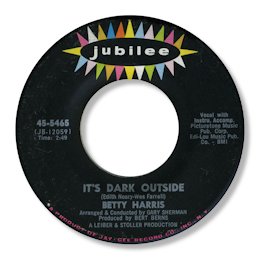 “Mo Jo Hannah”, a Clarence Paul co-penned song first cut the previous year by the unfortunately-named Henry Lumpkin for Motown (1029), is a very pacy if slightly messy, swamp-soul opus which would appear as one side of Betty’s third Jubilee 45 (# 5480). This song would later be rather better recorded by Esther Phillips in February 1964 for her first Atlantic single (Atlantic 2229), a session which would also be arranged by Garry Sherman and feature the Sweets on back-ups. Others to cut the song would include Aaron Neville, The Intrigues and, in 1972, Tami Lynn for Cotillion and UK Mojo, although New Orleans native Tami had also cut a rather better version back in 1963 for the AFO organisation which saw release on an Opus 43 LP (OP 4303) and appears on the 1993 Ace CD “Gumbo Stew” (CDCHD 450).
“Mo Jo Hannah”, a Clarence Paul co-penned song first cut the previous year by the unfortunately-named Henry Lumpkin for Motown (1029), is a very pacy if slightly messy, swamp-soul opus which would appear as one side of Betty’s third Jubilee 45 (# 5480). This song would later be rather better recorded by Esther Phillips in February 1964 for her first Atlantic single (Atlantic 2229), a session which would also be arranged by Garry Sherman and feature the Sweets on back-ups. Others to cut the song would include Aaron Neville, The Intrigues and, in 1972, Tami Lynn for Cotillion and UK Mojo, although New Orleans native Tami had also cut a rather better version back in 1963 for the AFO organisation which saw release on an Opus 43 LP (OP 4303) and appears on the 1993 Ace CD “Gumbo Stew” (CDCHD 450).
Betty’s version was coupled on her third Jubilee single with an ultra-slow re-vamp of the 1947-first-published (and probably much older) New Zealand Maori ‘farewell song’ “Hearere Ra”, better known to English-speaking folk as “Now Is The Hour”. Those who remember the song as something of a ‘family favourite’ sung by friends and relatives at the end of a party or simply to someone heading off to pastures new, may find Betty and the Sweets’ deeply gospelised interpretation little more than a weird ‘novelty’ – personally I love it! After Betty’s rather uncertain opening melisma on the word ‘now’, she and the girls drench the song’s inherent schmaltz with some wonderful gospel-soul and make the departure of a loved one really sound like the sad occasion it usually was.
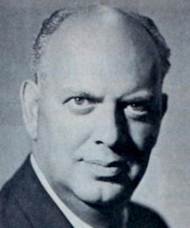 Jerry Blaine
Jerry BlaineTwo unissued-at-the-time tracks were also recorded, one pretty good and one just throwaway pop to my ears. “Why Don’t You Tell Him” is a very pretty soul-ballad which sees Betty for the first (and probably only) time in ‘uptown sweet-soul’ mode – but she handles the style very well indeed and the result, which required some vocal overdubs from her as late as 25th May the following year, probably deserved release on a fourth Jubilee single, although it wasn’t to be. The awful unissued “Everybody’s Love” (aka “Just Like Mine”) with Betty’s vocal all but lost in front of a fast Bo Diddley beat and some uncharacteristically quasi-teen-girly singing from the Sweets, is best forgotten. This song had already been cut in 1961 as “Just Like Mine” by The Renaults on Wand 114.
Apart from her vocal overdubs to the one unissued track in May 1964, these November 1963 sessions would be Betty’s last for Berns and for Jubilee. “His Kiss” had at least made the Pop Hot 100, peaking at No.89 but sales to black R&B fans were not helped by Billboard ceasing to publish an R&B chart from the end of that very November (it wouldn’t be reintroduced until 23 January 1965). The record made No.74 on the Cashbox Pop chart and No.15 on their R&B listing.
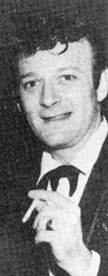 Bert Berns
Bert Berns Jubillee would reissue “Cry To Me” and “I’ll Be A Liar” on #5658 in 1969 (when it would again make the R&B chart, peaking at No.44) and the next reissue of Betty’s Jubilee material would be on two 45s in the Virgo Golden Memories Series, “Cry To Me” being paired with a reissue of Joe Henderson’s “Snap Your Fingers” on Virgo 6014 in 1973, while two years later Virgo 6036 effectively reissued Jubilee 5465 by pairing Betty’s “His Kiss” with “It’s Dark Outside”.
Then in 1980 UK Charly’s “In The Saddle” CRB 1002 Harris set featured just two Jubilee sides, “Cry To Me” and “I’ll Be A Liar”. All the Jubilee material (including the unissued tracks) finally came together in 1998 on UK Westside’s fine “Soul Perfection Plus” CD (WESA 807), which also included some pre-take studio chat. 2005’s Australian Aim 1502 CD “The Lost Soul Queen – Soul Perfection Plus Rare Tracks” included just “Cry To Me” and “I’ll Be A Liar” of the Jubilee tracks.
Thinking back to these sessions, Betty admits that “Jubilee did not turn out as good as it should” and the main reason she cites is the loss of both her manager, ‘Babe’ Chivian and her producer Bert Berns. The ‘loss’ of Berns does not refer to his later untimely death on 30 December 1967 as this happened too late to have had any effect on Betty’s career but rather to his attention in the mid-60’s being on things other than Miss Betty Harris. We’ll come to that in a moment but first, what of her manager, ‘Babe’ Chivian?
Well, in October 1963 (a month before Betty had even undertaken her second set of sessions with Berns), ‘Babe’ Chivian was being “sought by the FBI as a material witness to illegal Cosa Nostra activities in Philadelphia” (to quote a news report of the time). Quite what degree of involvement this implies is unclear but even the phrase “being sought” suggests he wasn’t readily ‘coming forward’ and may even perhaps have ‘disappeared’ for a time. What does seem certain is that, at this juncture, his primary attention would not have been on Miss Harris (or even on Mr Solomon Burke).
 Quite what happened to Chivian after this is also unclear. He may well have nominally retained his managerial role with Betty but he also certainly returned to Philly and to the auto trade as, some 8 years later, a 2nd October 1971 press report quoted the FBI as saying “the largest amount of forgery contraband ever seized in Philadelphia” had been discovered in Chivian’s office and that Chivian had been “charged with larceny, receiving stolen goods, counterfeiting, and ‘uttering’ and issuing forged ‘instruments’.” Much of this was connected with auto-licensing activities. Whether or not Chivian was tried and found guilty I have not discovered –but there probably wasn’t time as, within 3 months (according to Wikipedia), he would be dead, aged only 46.
Quite what happened to Chivian after this is also unclear. He may well have nominally retained his managerial role with Betty but he also certainly returned to Philly and to the auto trade as, some 8 years later, a 2nd October 1971 press report quoted the FBI as saying “the largest amount of forgery contraband ever seized in Philadelphia” had been discovered in Chivian’s office and that Chivian had been “charged with larceny, receiving stolen goods, counterfeiting, and ‘uttering’ and issuing forged ‘instruments’.” Much of this was connected with auto-licensing activities. Whether or not Chivian was tried and found guilty I have not discovered –but there probably wasn’t time as, within 3 months (according to Wikipedia), he would be dead, aged only 46.
The ’loss’ to Betty of Bert Berns’ attention clearly points to just how busy Bert was with other activities by late 1963 and how little time he was able to give to her. Throughout that year he had produced hits on UA for The Exciters and Garnet Mimms, had produced another hit for Baby Jane & The Rockabyes and had written hit material for the Four Pennies and The Rocky Fellers. He had also maintained the more-established Solomon Burke’s momentum for Atlantic with “Words”, “If You Need Me”, “Can’t Nobody Love You” and “You’re Good For Me”.
As the press was reporting Chivian’s problems in October of that year, Berns flew off to the UK for his first visit to Decca in London and must have returned only just in time for Betty’s second set of sessions in mid-November. Meanwhile Bert’s private life was keeping him busy too - he had met and fallen in love with fashion model and dancer Ilene Stuart, whom he would marry in 1964.
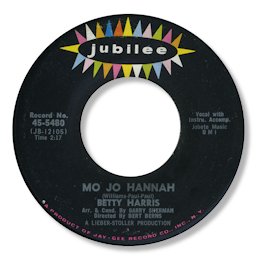 A probably now temporarily managerless Betty would wait in vain for Bert to produce a third set of sessions for Jubilee. His professional attention had now turned almost exclusively towards Atlantic. In March 1964 he would form his Keetch label to be distributed by Atlantic and then went on that year to write and produce lots of hits for Atlantic acts such as The Drifters, Solomon Burke, The Vibrations and LaVern Baker. In October of that year Bert was back in London to record Lulu and Them; then, with further big Atlantic successes on into 1965, Bert would form his Web IV publishing company in March of that year (‘Web’ for Wexler, the two Erteguns and Berns) before, in May, launching his own Bang label, named after the first names of the same four men.
A probably now temporarily managerless Betty would wait in vain for Bert to produce a third set of sessions for Jubilee. His professional attention had now turned almost exclusively towards Atlantic. In March 1964 he would form his Keetch label to be distributed by Atlantic and then went on that year to write and produce lots of hits for Atlantic acts such as The Drifters, Solomon Burke, The Vibrations and LaVern Baker. In October of that year Bert was back in London to record Lulu and Them; then, with further big Atlantic successes on into 1965, Bert would form his Web IV publishing company in March of that year (‘Web’ for Wexler, the two Erteguns and Berns) before, in May, launching his own Bang label, named after the first names of the same four men.
It’s probably a shame that Betty did not get taken to Atlantic at this stage as Berns would probably have continued to record her, perhaps first for them and then maybe even for his own R&B subsidiary label, Shout; but I guess if that had happened, however good the results, we would then have been denied the fine body of work she was soon to ‘put down’ in New Orleans with Allen Toussaint.
Some sources say Betty apparently met Toussaint in New Orleans while on tour but a Harris-related web-site claims Toussaint caught her act at the Apollo and Betty herself told David Cole that she thought it was her manager (was it still Chivian or someone else?) who brought them together, the pair meeting in New York in mid-1965 to strike a deal before Betty flew down to New Orleans to record.
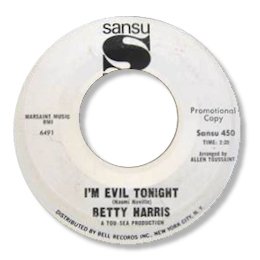 Toussaint and Marshall Sehorn were launching their then brand-new Sansu label and Betty would have the first release on it. The partnership between these two men (legalised via the Tou-Sea production company and the Marsaint publishing company) had actually begun with Lee Dorsey’s “Ride Your Pony”, which Marshall had taken to New York and leased to Larry Uttal for issue on Amy 927, the 45 becoming a hit just about the time Toussaint met up with Harris. However, wanting their own imprint, Allen and Marshall had then set up Sansu, whose offices in these early days were located on St. Phillip Street, while, for recording, use was probably made initially of Cosimo Matassa’s recently opened third studio, Jazz City, situated at 748 Camp Street (although Harris’ post-1967 recordings would have been cut either elsewhere in the Crescent City or possibly in Atlanta as it was in that year that the IRS seized Jazz City and all its contents from Matassa, with Toussaint and Sehorn not opening their own Sea-Saint Studio on Clematis Street until 1973, long after Harris had ceased recording).
Toussaint and Marshall Sehorn were launching their then brand-new Sansu label and Betty would have the first release on it. The partnership between these two men (legalised via the Tou-Sea production company and the Marsaint publishing company) had actually begun with Lee Dorsey’s “Ride Your Pony”, which Marshall had taken to New York and leased to Larry Uttal for issue on Amy 927, the 45 becoming a hit just about the time Toussaint met up with Harris. However, wanting their own imprint, Allen and Marshall had then set up Sansu, whose offices in these early days were located on St. Phillip Street, while, for recording, use was probably made initially of Cosimo Matassa’s recently opened third studio, Jazz City, situated at 748 Camp Street (although Harris’ post-1967 recordings would have been cut either elsewhere in the Crescent City or possibly in Atlanta as it was in that year that the IRS seized Jazz City and all its contents from Matassa, with Toussaint and Sehorn not opening their own Sea-Saint Studio on Clematis Street until 1973, long after Harris had ceased recording).
So Jazz City is most likely where Betty Harris appeared in about August 1965 for her first Sansu session, which resulted in “I’m Evil Tonight” and “What A Sad Feeling” (Sansu 450), with the former track also seeing later reissue as one side of Sansu 466. Both songs were penned by Toussaint (using his mother’s maiden name of Naomi Neville) and Allen would not only arrange, produce and usually play on all of Betty’s Sansu (and one SSS-Int.) recordings but would also write all 20 of them too.
“I’m Evil Tonight” nicely combined an appealing semi-pop main riff with some meaningful and, at times, quite intense vocalising from Betty.
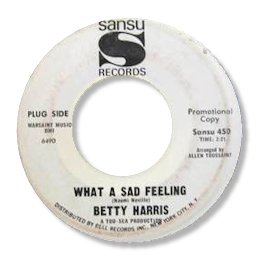 The original ‘plug-side’, though, was
The original ‘plug-side’, though, was ![]() What A Sad Feeling, a slower and altogether more dramatic opus. You can imagine Irma Thomas singing this one but, with no disrespect to the true Soul Queen of New Orleans, the ‘usurper’ from Dothan via the Big Apple makes such a fine job of this telling piece that there’s no need to imagine the song in anyone else’s hands; indeed, despite her several fine Jubilee sides, this track really marks the beginning of the recordings which turned Betty into the revered deep-soul 60’s legend she deservedly became. Commercially though, the 45 failed to return Betty to the charts.
What A Sad Feeling, a slower and altogether more dramatic opus. You can imagine Irma Thomas singing this one but, with no disrespect to the true Soul Queen of New Orleans, the ‘usurper’ from Dothan via the Big Apple makes such a fine job of this telling piece that there’s no need to imagine the song in anyone else’s hands; indeed, despite her several fine Jubilee sides, this track really marks the beginning of the recordings which turned Betty into the revered deep-soul 60’s legend she deservedly became. Commercially though, the 45 failed to return Betty to the charts.
Betty’s second trip to New Orleans was early in 1966. “Sometime” was a pleasant-enough fairly lay-back pop-soul ballad which Betty mainly sings in sweet-mode although she still manages to include some dramatic gospelly passages here and there. “I Don’t Wanna Hear It” was a rather brooding-sounding mid-to-up tempo piece with strong vocals from Betty, especially each time she sings in front of the back-up girls as they chant the title-line. Sadly, this pairing, issued on Sansu 452, also failed to make much impression saleswise.
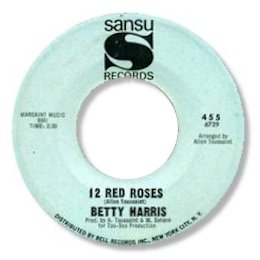 Undeterred, Toussaint persevered and in about April 1966 Betty flew south again, this time to cut the potent, driving and funky
Undeterred, Toussaint persevered and in about April 1966 Betty flew south again, this time to cut the potent, driving and funky ![]() 12 Red Roses, using exactly the same production techniques and male-back-up sound which was then bringing Toussaint and Sehorn big commercial success with Lee Dorsey. It’s a great ‘never-let-up’ opus with an irresistible Crescent City beat and some very tasty piano fills from Toussaint.
12 Red Roses, using exactly the same production techniques and male-back-up sound which was then bringing Toussaint and Sehorn big commercial success with Lee Dorsey. It’s a great ‘never-let-up’ opus with an irresistible Crescent City beat and some very tasty piano fills from Toussaint.
If that was good, ![]() What’d I Do Wrong on the other side of Sansu 455 was something else! This was one of Betty’s ‘killer’ solo deep-soul outings for the label. Everything is right about this wonderful recording. The mournful brass backdrop, the terrific guitar fills and Toussaint’s beautiful bluesy piano passages which still allow the existence of an almost eerie sparseness, with no back-up singers (rightly) deemed necessary behind Betty’s emotion-soaked gospelly vocal. This is also great writing by Toussaint and no-one could ever have bettered Harris’ interpretation of his telling lyrics. The cut would also reappear as one side of Betty’s Sansu 478 release nearly two years later (see shortly).
What’d I Do Wrong on the other side of Sansu 455 was something else! This was one of Betty’s ‘killer’ solo deep-soul outings for the label. Everything is right about this wonderful recording. The mournful brass backdrop, the terrific guitar fills and Toussaint’s beautiful bluesy piano passages which still allow the existence of an almost eerie sparseness, with no back-up singers (rightly) deemed necessary behind Betty’s emotion-soaked gospelly vocal. This is also great writing by Toussaint and no-one could ever have bettered Harris’ interpretation of his telling lyrics. The cut would also reappear as one side of Betty’s Sansu 478 release nearly two years later (see shortly).
 Back in 1966, “12 Red Roses” should have easily made the US charts – but no, it didn’t. One wonders what kind of national promotion Betty’s 45 received as I can find no review or advertisement for it in Billboard, despite Sansu being distributed by New York’s Bell label. However, I have a feeling that most of Larry Uttal’s Toussaint/Sehorn-related promotion budget was being expended instead on Lee Dorsey’s product, as Lee was in the process of enjoying four straight Top 10 R&B hits on Utall’s own Amy imprint.
Back in 1966, “12 Red Roses” should have easily made the US charts – but no, it didn’t. One wonders what kind of national promotion Betty’s 45 received as I can find no review or advertisement for it in Billboard, despite Sansu being distributed by New York’s Bell label. However, I have a feeling that most of Larry Uttal’s Toussaint/Sehorn-related promotion budget was being expended instead on Lee Dorsey’s product, as Lee was in the process of enjoying four straight Top 10 R&B hits on Utall’s own Amy imprint.
This theory is perhaps given support by the very obvious ‘Dorsey sound’ on Betty’s next Sansu 461 single, “Lonely Hearts”, cut in early 1967 but brought to a close by a weak and overly-long instrumental segment when what was clearly needed was at least another verse from Betty.
Slightly better was “Bad Luck”, a nice mid-pacer with not such an obvious Dorsey connection and offering a good superstitious tale of Betty being so prone to bad luck that even a four-leaf clover withered when it touched her hand!
 Again the single flopped and Betty must have wondered if she was ever going to return to the charts; but, fortunately, her next Sansu outing finally achieved that very goal.
Again the single flopped and Betty must have wondered if she was ever going to return to the charts; but, fortunately, her next Sansu outing finally achieved that very goal.
In mid-1967 Betty’s jet-hopping visits to New Orleans were renewed, yet the session produced only one known side, “Nearer To You”. Toussaint pared down the backing and Betty actually delivered a genuinely ‘deep’ vocal performance, the ‘commercial’ aspects of the arrangement being chiefly the overly sweet back-up chants and a rather cheesy organ. However, this combination of styles certainly did the trick as, despite a continuing lack of much press promotion, the song, coupled on Sansu 466 with a reissue of “I’m Evil Tonight”, made No.16 on Billboard’s R&B chart and No.85 on their Pop listing.
Betty’s new R&B hit may not have been a high-charter but it was a very steady seller, remaining in the listings from 15th July to 30th September and it would have been around August, when she was probably touring on the strength of it, that she joined up with James Carr and found herself moonlighting on one of his Goldwax recordings, “I’m A Fool For You” (#328). This was essentially a gently-rolling-rhythmed duet between the these two fine singers with James taking most of the lead lines and Betty answering his baritone with some quite high register responses. The record had appeal for sure and provided Betty with another hit, albeit she was unnamed on the label for contractual reasons. The recording would enter the charts on 23rd September, making No.42 R&B/No.97 Pop.
 Betty explained her sortie with Carr thus: “We were travelling together and we sang all kinds of songs. I went with him (to his session and) on our way his guitar-player wrote this song for him. At the session we were goofing around with it, not doing anything for real, but it was taped and it sounded good. I called Marshall Sehorn about me being on it and he said ‘No’.”
Betty explained her sortie with Carr thus: “We were travelling together and we sang all kinds of songs. I went with him (to his session and) on our way his guitar-player wrote this song for him. At the session we were goofing around with it, not doing anything for real, but it was taped and it sounded good. I called Marshall Sehorn about me being on it and he said ‘No’.”
So this was why Betty couldn’t be credited, even though, just like her own Sansu label, Goldwax was, at this time, also distributed by Larry Utall’s Bell organisation. According to Quinton Claunch’s recollections with Colin Dilnot, the recording itself was cut at Sam Phillips Studio in Memphis but the label writers’ credits feature not just James’ guitarist but no less than five top Memphis-related personalities, namely Dan Greer, Quinton Claunch, Earl Cage, George Jackson, and Rudolph Russell. Betty’s brief association with Carr would lead to yet another untrue rumour that she later became his road manager.
Anyway, both sides of Betty’s own ‘follow-up’ Sansu 45 were actually cut around August 1967 while “Nearer To You” was still charting and pretty close to the time of her encounter with Carr. “I’m Gonna Git Ya” returned Betty to the ‘Lee Dorsey’ format but, having said that, I find this slow but very ‘New Orleans-second line’ piece with its potent backbeat and girl group support to be really appealing.
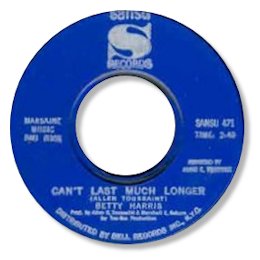 However, the other side of Sansu 471,
However, the other side of Sansu 471, ![]() Can’t Last Much Longer, was another Harris deep gem which rivalled even “What’d I Do Wrong” for top honours in those particular stakes. A pathos-inducing piano and then a brass fanfare introduce us to a fast-fading Betty (though not vocally!) who is such ‘a fool’ for her guy that she can’t put up much longer with the total disinterest he is now showing in her. The lyrics are so mournfully expressed one fears there could even be a potentially suicidal outcome for the girl rather than merely a reluctant acceptance of the inevitable ending of the relationship. It’s just a terrific piece of deep-soul.
Can’t Last Much Longer, was another Harris deep gem which rivalled even “What’d I Do Wrong” for top honours in those particular stakes. A pathos-inducing piano and then a brass fanfare introduce us to a fast-fading Betty (though not vocally!) who is such ‘a fool’ for her guy that she can’t put up much longer with the total disinterest he is now showing in her. The lyrics are so mournfully expressed one fears there could even be a potentially suicidal outcome for the girl rather than merely a reluctant acceptance of the inevitable ending of the relationship. It’s just a terrific piece of deep-soul.
For Betty’s next outing, Toussaint decided to pair her up with Lee Dorsey. This was probably merely an attempt to have some of Dorsey’s recent much bigger chart success rub off on Betty, although Betty referred to her duet with James Carr and surmised that “maybe that’s where the Lee Dorsey idea was born.”
The pair got together around October/November 1967 and the results were intriguing. “Love Lots Of Lovin’” was very much in the style Dorsey had been recently using and was a rather lightweight poppish piece, although both singers perform well enough, especially on the bridges between the main sections of the song. The crossover appeal was not enough though for major success, the record on Sansu 474 merely ‘bubbling under’ the Billboard Pop chart at No.110 for just the one week commencing 23rd December. One wonders what might have been if Amy had picked up the master and issued it effectively as a Lee Dorsey release.
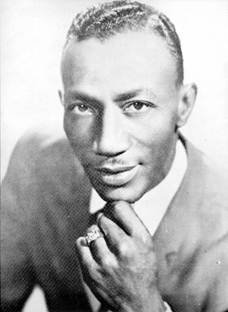 However, the flip-side,
However, the flip-side, ![]() Take Care Of Our Love, was a superb piece of funereally-paced deep-soul – indeed I would go as far as to say that it’s probably the finest example from a male/female duo that I can recall. Lee Dorsey would not be a singer one would normally associate with deeply expressive singing but here he absolutely gives as good as he gets and what he gets from Betty is a staggeringly emotive response.
Take Care Of Our Love, was a superb piece of funereally-paced deep-soul – indeed I would go as far as to say that it’s probably the finest example from a male/female duo that I can recall. Lee Dorsey would not be a singer one would normally associate with deeply expressive singing but here he absolutely gives as good as he gets and what he gets from Betty is a staggeringly emotive response.
The empathy between the two singers seems stunningly good and yet Betty had reservations. She regarded the top-side (not unreasonably perhaps) as “definitely throwaway” but went on to say she didn’t like the other side either. She added: “I didn’t consider myself a double-singer but I had no say in the matter”. Betty, it seems, has always preferred to sing solo, although she was clearly more than happy to join vocally with James Carr.
Towards the end of 1967 Betty was preparing to go on a tour of Europe the following year with Otis Redding (an artist she had toured with before) but of course this would come to nought as a result of the Big O’s untimely death on 10 December.
Although Betty’s sporadic visits to record with Toussaint usually only resulted in two songs being recorded, it seems she managed three at her next session in early 1968, although, on this occasion only, there was a sizable gap between the master numbers of each of these recordings and it’s just possible there were actually three separate sessions. In any case, this session (or sessions) might well not have been in New Orleans as Cosimo’s Jazz City studio had now closed and, in addition to using other Crescent City studios, Toussaint and Sehorn also apparently did some recording in Atlanta. (However, when Betty herself recalled her Sansu years, she implied that she cut all her songs for Toussaint actually in New Orleans).
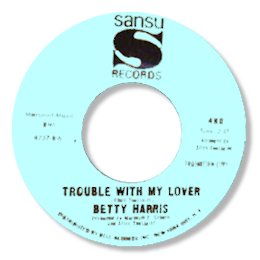 Anyway, the first song in the can was “Mean Man”, by far the funkiest record Betty had yet cut for Sansu which possibly introduced the use on her recordings of the Meters, whom Toussaint and Sehorn had by now more or less recruited as a ‘house-band’. The track was released on Sansu 478 with the older but wonderful “What’d I Do Wrong” re-used on the flip.
Anyway, the first song in the can was “Mean Man”, by far the funkiest record Betty had yet cut for Sansu which possibly introduced the use on her recordings of the Meters, whom Toussaint and Sehorn had by now more or less recruited as a ‘house-band’. The track was released on Sansu 478 with the older but wonderful “What’d I Do Wrong” re-used on the flip.
The other songs recorded allegedly at the same session were the mid-paced “Hook, Line n’ Sinker” on which Betty’s vocal is well up to its usual potent standard as she really tries to ‘sell’ what is, in truth, a fairly ‘average’ song; and “Show It”, a slightly pacier but rather mediocre item. These two were coupled on the very next Sansu release (#479).
By about June of ’68 it seems Toussaint was getting a bit desperate as to how to return Betty to the charts and he selected for her session at that time a revival of Lee Dorsey’s “Ride Your Pony” hit. I’m sure Betty’s heart would not have been in this one but as always her professionalism took over and she really delivers on what is a fine, funky foot-tapper, proving she could handle a driving piece of soul as well as anyone.
Some wonderful bass-lines introduce and underpin the very impressive other track cut at that time, namely ![]() Trouble With My Lover. This is a rare case where mid-paced funky soul can also be very telling in the hands of a singer of the quality of Harris. For me, this is the best mid-to-uptempo side Betty cut for Sansu, along with “There’s A Break In the Road” (see shortly). Sadly, when released together on #480, neither of the mid-’68-recorded sides caused much of a stir saleswise.
Trouble With My Lover. This is a rare case where mid-paced funky soul can also be very telling in the hands of a singer of the quality of Harris. For me, this is the best mid-to-uptempo side Betty cut for Sansu, along with “There’s A Break In the Road” (see shortly). Sadly, when released together on #480, neither of the mid-’68-recorded sides caused much of a stir saleswise.
 There followed a longish gap in recording before Betty returned to Toussaint in about March of 1969. This is possibly due to the abandonement at that time of the Sansu label, only a couple of Art Neville singles having crept out after Betty’s last effort. The label would not be re-activated until the mid-70’s and the two sides Betty cut in ’69 were leased out for single release to Shelby Singleton’s SSS-International label.
There followed a longish gap in recording before Betty returned to Toussaint in about March of 1969. This is possibly due to the abandonement at that time of the Sansu label, only a couple of Art Neville singles having crept out after Betty’s last effort. The label would not be re-activated until the mid-70’s and the two sides Betty cut in ’69 were leased out for single release to Shelby Singleton’s SSS-International label.
As already implied, “There’s A Break In the Road” is a terrific piece of mid-paced Meters-led funky-soul, with Betty riding the potent riff in great style. I love the guitar-feedback that seems to have been deliberately featured here as it just adds ‘edge’ to what is almost a groundbreaking track for the late-60’s.
Conversely, the other track recorded for inclusion on the SSS-Int single is just one huge musical ‘mistake’ as far as I’m concerned. In about mid-’68, an artiste called Zilla Mayes (her surname more usually excluded the ‘e’) recorded a great Allen Toussaint song called “All I Want Is You” for one of Allen and Marshall’s subsidiary labels, Tou-Sea (#132). Zilla was older than Betty and, in addition to sporadically recording since 1951, she was also an Atlanta Radio dee-jay and gospel singer. Her 45 also had an excellent Toussaint song on the other side called “I Love You Still”.
Anyway, at her1969 (and last) session for Toussaint, Betty also cut a Toussaint song called “All I Want Is You” but this was a totally different, appalling tuneless ‘turkey’ of a song which sounded like it was destined for some third-class theatrical musical show. What’s more, if it really is Betty Harris trying to sing it (which I can barely believe), she has real trouble even holding what little there is of a tune and also struggles to hit some of the notes. This awful track should have been left to go mouldy on the cutting room floor.
 This untypical Harris performance and Zilla Mayes’ amazing similarity to Betty’s more usual singing-style on her own very different song of the same name, would later completely ‘throw’ UK Charly Records whose 1980 “In The Saddle” CRB 1002 compilation would wrongly use Zilla’s recording in place of Betty’s, whilst crediting Betty on both the label and sleeve track-listing (aurally an absolutely understandable mistake).
This untypical Harris performance and Zilla Mayes’ amazing similarity to Betty’s more usual singing-style on her own very different song of the same name, would later completely ‘throw’ UK Charly Records whose 1980 “In The Saddle” CRB 1002 compilation would wrongly use Zilla’s recording in place of Betty’s, whilst crediting Betty on both the label and sleeve track-listing (aurally an absolutely understandable mistake).
It’s a great shame that such a wretched recording was the last side Betty would ever cut for Allen Toussaint as, overall, her body of work for him was outstanding. However, it seems that, although Betty clearly always gave of her professional best for Allen, she did not relate to him as well as she did to Bert Berns during her admittedly far fewer sessions with the New York producer.
Of her nearly 4 years of sporadic recording for Sansu, she agreed that “…the music was fantastic” but she clearly felt that she was not involved enough in the song-selection and recording process when she added: “All my sessions…were put together before I arrived…and some things were done after I left.”
Mind you, to be fair, with Betty simply flying in from the east coast to cut maybe no more than a couple of tracks and then flying home again as soon as possible, one can perhaps see how a writer, arranger and producer as adept as Allen Toussaint would want to have songs and maybe some rhythm tracks ready in advance of her arrival and then to arrange sweetening processes perhaps after her departure.
Musically, it’s clear Betty liked her ‘deeper’ work best when she concurred: “That was me, that’s just me. The faster stuff I did because you had to do it but lyrics have always meant a lot to me. Out of the things Allen did, I was in love with ‘Can’t Last Much Longer’ (and) ‘Nearer To You’. Some of his music was, like, very, very meaningful to me.” Us too, Betty!
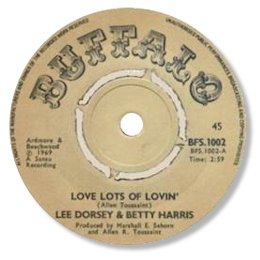 Having cut 20 known tracks for Sansu, Betty might well have expected at least one album to have been issued by the label but – no, it was left to the UK to provide one.
Having cut 20 known tracks for Sansu, Betty might well have expected at least one album to have been issued by the label but – no, it was left to the UK to provide one.
Her earlier Jubillee material had seen scant coverage in the UK at the time (only “Cry To Me”/”I’ll Be A Liar” appearing there on UK Decca’s London American label #9796); however, EMI’s UK Stateside label did at least issue two singles of Sansu material, while a small UK label called Buffalo picked up just on the Dorsey-Harris two-sider.
Thanks to Sansu’s distribution by Bell, the first (close to contemporaneous) album releases anywhere of some of Harris’ Sansu recordings appeared on the revered UK various-artist 3LP set “Bell’s Cellar Of Soul” (issued separately on MBLL 102, 107 and 117, the first two albums appearing in 1968 and the third in 1969).
However, also in 1969, as Betty’s tenure with Sansu came to an end, a small UK label called Action put out what became for many years the definitive Betty Harris LP, still much sought-after and pricey, entitled “Soul Perfection” (ACLP 6007). This contained 16 of Betty’s Sansu outings (a large number of tracks for an LP in those days).
 Action had been formed in 1968 by record-store owner, soul music magazine editor and later UK Contempo and US Ichiban owner John Abbey. It was distributed by Island Records and based at Music House, 12 Neasden Lane, London NW10. Action issued no less than 56 singles in the 1968-1969 period from many different chiefly US soul-related sources (including a pairing of Betty’s “Ride Your Pony” and “Trouble With My Lover” on ACT 4535), plus another 24 singles when the label was revived between 1971 and 1974. It also put out 12 albums, including Betty’s.
Action had been formed in 1968 by record-store owner, soul music magazine editor and later UK Contempo and US Ichiban owner John Abbey. It was distributed by Island Records and based at Music House, 12 Neasden Lane, London NW10. Action issued no less than 56 singles in the 1968-1969 period from many different chiefly US soul-related sources (including a pairing of Betty’s “Ride Your Pony” and “Trouble With My Lover” on ACT 4535), plus another 24 singles when the label was revived between 1971 and 1974. It also put out 12 albums, including Betty’s.
Regarding later Harris reissues, apart from the aforementioned 45s of Jubilee material by Jubilee itself (1969) and Virgo (1973 and 1975), it would be 1980 before UK Charly issued their also already-mentioned CRB 1002 Harris LP “In The Saddle”, another 16-tracker, although only 13 Harris Sansu sides were featured, as also included were both sides of Betty’s first Jubilee single and the Zilla Mayes recording of “All I Want Is You” masquerading as by Betty.
In the same year, UK Charly also issued a three-track black-and-white picture sleeve single featuring “Ride Your Pony”, “Trouble With My Lover” and “Nearer To You” (CTD 102).
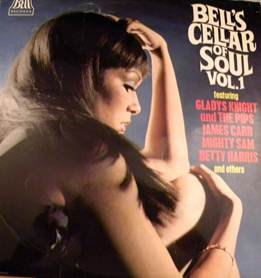 The CD era saw the aforementioned 1998 “Soul Perfection Plus” comprehensive Harris collection from UK Westside (WESA 807), followed by the also already mentioned “The Lost Soul Queen – Soul Perfection Plus Rare Tracks” Australian AIM 1502 set from 2005.
The CD era saw the aforementioned 1998 “Soul Perfection Plus” comprehensive Harris collection from UK Westside (WESA 807), followed by the also already mentioned “The Lost Soul Queen – Soul Perfection Plus Rare Tracks” Australian AIM 1502 set from 2005.
After Betty ended her association with Allen Toussaint, she decided to give up major musical activity chiefly because she was tired of the almost endless touring, drab hotel rooms and living out of a suitcase. However, the exact chronology of her movements from this point right up until 1996/7 have so far never been satisfactorily clarified.
At some point she returned to Alabama about which she recalls: "I said I'd rather be broke and be happy, than to have money and be miserable. And with that in mind, I went back home to Alabama, and I knew that it was going to be hard because I had lived an upscale life.”
However, possibly after she had returned to her native State, it seems she moved to Miami where she performed just at one or two clubs before deciding to quit all forms of the music scene completely. She says: "Otis had passed, Bert had passed, ‘Babe’ had passed. I looked at this business and said maybe this is not what God wanted me to do. As much as I loved singing, I just did not find things in the world the way I thought they were. I had to find me.”
Betty went ‘back to school’ for a time to learn business studies, married, and settled with her new husband and son in Florida. Then, in about 1982, her daughter came along and she gave much of her life over to raising her. Betty says: “I guess God put my child in my life. My daughter Christina, I just did everything for her. I put her in pageants and parades. My daughter became the focus of my life.”
In addition to her family responsibilities, Betty still sang, but now only in churches and at community events, as she had done in Alabama in her childhood.
In 1996/7 she moved to Hartford, Connecticut, where she joined an Artists Collective and began giving singing lessons. It was here too that she put her daughter through high school, also temporarily spending some time in Atlanta during her mother’s final months.
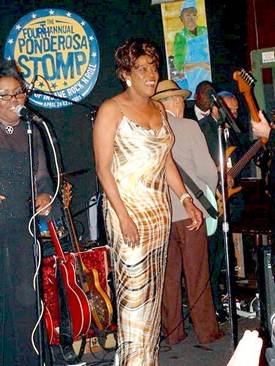 Then in 2001, her daughter found several Betty Harris fan sites on the web, prompting the singer to join a soul mailing list to announce her whereabouts. Her re-emergence caused quite a stir in deep soul circles and this inspired Betty to consider the possibility of performing again. Indeed, by 2004 she was anticipating that the BBC in the UK would be making a film about her life and announcing her intention to co-produce a new CD slated to be cut in Boston starting September 6th and released that December. This was to have been in conjunction with Boston-based guitarist and producer Chris Stovall Brown. However, neither of these projects came to fruition and Betty finally resurfaced in the music world on April 17, 2005, when she played her first live gig in 35 years at a benefit at Weaver High School in Hartford, which her daughter, by then at college, had once attended. Just a few weeks after this, Harris performed at New Orleans’ legendary annual Ponderosa Stomp.
Then in 2001, her daughter found several Betty Harris fan sites on the web, prompting the singer to join a soul mailing list to announce her whereabouts. Her re-emergence caused quite a stir in deep soul circles and this inspired Betty to consider the possibility of performing again. Indeed, by 2004 she was anticipating that the BBC in the UK would be making a film about her life and announcing her intention to co-produce a new CD slated to be cut in Boston starting September 6th and released that December. This was to have been in conjunction with Boston-based guitarist and producer Chris Stovall Brown. However, neither of these projects came to fruition and Betty finally resurfaced in the music world on April 17, 2005, when she played her first live gig in 35 years at a benefit at Weaver High School in Hartford, which her daughter, by then at college, had once attended. Just a few weeks after this, Harris performed at New Orleans’ legendary annual Ponderosa Stomp.
Later in 2005 she went to Melbourne, Australia where she played a Hurricane Katrina benefit gig at the city’s Prince Of Wales venue that raised more than $30,000 for the New Orleans Musicians Clinic. The Australian band was comprised of carefully chosen members of the local roots scene who had cut their teeth on early New Orleans soul, R&B and funk sounds, fronted by Andy Baylor on guitar.
Harris was so impressed with this band that she allegedly parted company with the Stovall Brown unit on her return to the States and re-visited Melbourne again in November 2006 to play once more with Baylor and co. at the Prince Of Wales and at the Queenscliff Music Festival. While ‘down under’ she also appeared on the television program "Rockwiz", where she sang "Cry to Me" solo and her old Lee Dorsey duet "Love Lots of Lovin'" with Australian singer John Paul Young.
 It had been during her 2005 trip to Australia that a visit to Hound Dog's Bop Shop in West Melbourne had triggered a series of events that led to Harris obtaining the rights to her Sansu master tapes. When she was shown the AIM compilation CD of her work, her lawyer Fred Wilhelms III contacted the Australian label and asked them who had licensed Harris' music to them. The trail led to a company called Gulf Coast Music. Fred Wilhelms explained to Red Kelly that GCM had been the entity set up by the Federal court to handle Marshall Sehorn's music assets when he declared bankruptcy in the mid-90s as a result of several judgments against him for bootlegging the Chess catalogue. When approached, Wilhelms says GCM accepted Betty’s claim to the Sansu masters because there was no proof she had ever been paid royalties and the rights were duly transferred to her.
It had been during her 2005 trip to Australia that a visit to Hound Dog's Bop Shop in West Melbourne had triggered a series of events that led to Harris obtaining the rights to her Sansu master tapes. When she was shown the AIM compilation CD of her work, her lawyer Fred Wilhelms III contacted the Australian label and asked them who had licensed Harris' music to them. The trail led to a company called Gulf Coast Music. Fred Wilhelms explained to Red Kelly that GCM had been the entity set up by the Federal court to handle Marshall Sehorn's music assets when he declared bankruptcy in the mid-90s as a result of several judgments against him for bootlegging the Chess catalogue. When approached, Wilhelms says GCM accepted Betty’s claim to the Sansu masters because there was no proof she had ever been paid royalties and the rights were duly transferred to her.
This was just in time, as pop diva Christina Aguilera had then only recently sampled Allen Toussaint’s Harris-recorded song “Nearer To You” as part of her “Understand” track from her “Back To Basics” album, which had then already sold 2 million copies worldwide.
So, finally, not only was Harris' soul legacy being recognised but she would also receive some long-overdue and well-deserved financial reward for her past endeavours. In 2006, Betty commented: "I was angry because I did all of that work and didn't get anything for it. Normally you would get paid for studio time - I didn't even get that. It was a very hurtful time in my life. I thought what I was doing was worth a lot more than that. But you have to move on, so I got out of show business, went back to school, and I married and had kids. I refused to be labelled as a has-been in this business. I've always been a very determined person, to try and make the best of any situation. I've learnt that if you wait long enough, it's bound to come to you. I was able to get all my masters back from Sansu. We went to Nashville and I had them digitally redone and before too long we’re going to release them”.
 It was also suggested that some of the songs Betty obtained have never yet seen reissue and so these would therefore have to be unissued Sansu Harris recordings. To my knowledge some 4 separate reissue compilations have appeared between 2006 and 2011 (see cover shots nearby), two of them, “Soul Cuts” (28 tracks on Master Classics) and “Selected Hits” (16 tracks on Charly) apparently being for MP3 download only, while the other two, “Greatest Hits” (15 tracks on Platinum Records) and “”Lonely Hearts” (16 tracks on Jukebox Entertainment) were also made available on CD. I am not aware of the inclusion on any of these releases of ‘new’ titles from Betty’s past recording history, although it seems the “Lonely Hearts” set did include 2 versions of “I Don’t Want To Hear It”.
It was also suggested that some of the songs Betty obtained have never yet seen reissue and so these would therefore have to be unissued Sansu Harris recordings. To my knowledge some 4 separate reissue compilations have appeared between 2006 and 2011 (see cover shots nearby), two of them, “Soul Cuts” (28 tracks on Master Classics) and “Selected Hits” (16 tracks on Charly) apparently being for MP3 download only, while the other two, “Greatest Hits” (15 tracks on Platinum Records) and “”Lonely Hearts” (16 tracks on Jukebox Entertainment) were also made available on CD. I am not aware of the inclusion on any of these releases of ‘new’ titles from Betty’s past recording history, although it seems the “Lonely Hearts” set did include 2 versions of “I Don’t Want To Hear It”.
2007 was another busy year for Betty, including an appearance at the "Porretta Soul Festival" in Italy before travelling on to make her French debut at the Perigueux New Orleans Music Festival that August. Betty would be back home in time for the release in November of her long-awaited ‘come back’ CD “Intuition”, but what a disappointment it proved to be. She had signed a deal with Jon Tiven to produce it in Nashville for his Evidence label (# ECD 26135-2) but, despite one or two names from the soul past like Jerry Ragovoy, Don Covay and Freddie Scott having some marginal input, and despite Betty herself being in fine voice, most of the songs had no soulful content at all, running closer to modern country-blues in style (the best is a moving tale of domestic violence entitled “She Stays On” which has a very Swamp Dogg feel to it). Tiven would produce the same level of mediocrity on his two Evidence CDs the following year featuring two more soul legends, Garnet Mimms and Howard Tate (whose earlier Ragovoy-produced “Rediscovered” Private Music/BMG CD in 2004 had been much better). In my opinion, Tiven simply failed to major on the great expressive vocal talents who had come his way.
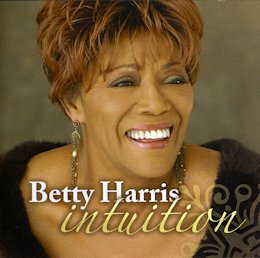 If you want to hear just how soulfully emotive Betty could have been with the right material, then go here to catch a
1 min 52 sec. clip of her singing part of her “Cry To Me” rendition at the Porretta Terme festival in the same year her CD emerged. Allowing for the ‘iffy’ sound, one can soon tell that Betty could still sing deeply and impressively and it’s a shame that the clip cuts off abruptly for some reason well before the performance is finished. Tiven should have been watching and listening and, whilst one can understand that neither he nor Betty would have wanted a CD merely full of re-vamped old soul favourites, at least more of the modern songs could have been given a soulful feel.
If you want to hear just how soulfully emotive Betty could have been with the right material, then go here to catch a
1 min 52 sec. clip of her singing part of her “Cry To Me” rendition at the Porretta Terme festival in the same year her CD emerged. Allowing for the ‘iffy’ sound, one can soon tell that Betty could still sing deeply and impressively and it’s a shame that the clip cuts off abruptly for some reason well before the performance is finished. Tiven should have been watching and listening and, whilst one can understand that neither he nor Betty would have wanted a CD merely full of re-vamped old soul favourites, at least more of the modern songs could have been given a soulful feel.
Since 2007 Betty has also visited Spain, Italy, France once again, Australia twice more and has appeared at New York’s Lincoln Center.
With her daughter now married and having produced a grandchild, Betty has since based herself in another Connecticut city, Middletown. In January 2012, the local paper reported that, after all her touring, she was now ready to play “where she lives”, with a new band of her own, The Breaking News, which included musical director Tony Cafiero of Guilford on keyboards and Tom Smith of Cheshire on drums, these English-sounding cities actually being in Connecticut of course. Betty said: “Out of all this time that I’ve played, I’ve never had my own group, my own band, and I’ve found that to be an excellent experience; to have guys who rehearse with you, they know what you’re going to do. To have someone that has sat down and worked it out and is not just playing a chart. ... it’s really nice.”
Betty and her band played a ‘tune-up’ gig in December 2011 at The Cypress Restaurant in Middletown and on 7th January 2012 they played a bona fide $30-at-the-door Soul & Funk concert at Trinity-on-Main, a former church in New Britain that’s now a local cultural and performing arts center.
It’s nice to know that a great performer from the classic soul era is still ‘on song’ and entertaining the masses. Long may it be so.
UPDATE ~ On Saturday July 21st, 2012 Betty gave a radio interview on Station WRTC-FM out of Hartford, Connecticut (near her own present home). A few interesting observations emerged which add a little more info. to that contained in the main article.
Betty confirmed her high regard for Bert Berns. She said her “Cry To Me” session at Bell Sound took just 3 takes, the shortest session she ever had, although Berns was a person who “knew what he wanted to hear” and apparently, at a later session for him, another of Betty’s songs would see her made to sing 33 takes. She had nothing but praise too for the Sweet Inspirations who linked into “Cry To Me” so easily with only a minimum of discussion between them about what they were going to do.
On her 1967 3-month gruelling road-tour with the Otis Redding Review, she notes that they started off at the Apollo with 18 acts on the bill, including Johnnie Taylor and Bettye Swann (though neither she nor the generally knowledgeable dee-jay could remember Bettye’s surname!) She found Otis to be quiet, focused but not pushy, serious about what he did, a businessman but also a guy who could just be himself and didn’t worry about other acts maybe being in competition with him in any way.
Re her Sansu recording “Love Lot’s Of Loving” with Lee Dorsey, she confirms this was not a true duet in that Dorsey’s vocal and much, if not all of the backing track had already been cut by Allen Toussaint before Betty hit the Big Easy and Betty merely added her own vocal to the proceedings. Betty comments that she actually preferred the way she cut her Sansu tracks (by adding vocals to existing backing-tracks) to cutting ‘live’ in the studio. She maintained this allowed her to be more creative regarding her vocal before it got added into the mix. It was also made clear that Betty was already living in Miami during the time of her Sansu tracks and she was flying into New Orleans from there (not New York) for mainly 2-week periods to cut her sessions with Toussaint (some four weeks for her first ones).
Re her “Nearer To You” Sansu track, she confirms that, when she arrived to cut her vocal, there was very little already laid down, namely just a basic Toussaint piano track plus a bass. She left New Orleans of course before Toussaint mixed the final track and was amazed when, back in Miami, she heard the finished product with all the overdubs etc and barely recognised the piece.
When the dee-jay played Betty’s “A Bible And A Beer” from her 2007 Evidence CD, “Intuition”, Betty commented that her preacher-mother would not have approved of that title as she used to say to her when she was a younger secular soul singer: “That’s not the way God wants you to live”. It’s also clear that Betty shares my own view about this particular CD – basically she doesn’t rate it and doesn’t consider it to showcase “the real Betty Harris”.
When she first began her legal processes to recover her rights to her Sansu recordings - via her first lawyer Fred Wilhelms (now sadly deceased after contracting pancreatic cancer) - she was having a pretty rough time, as she says that was soon after she had lost both her mother and her husband.
While talking about her currently on-going legal action against Sony over Christine Aguilera’s sampling of her “Nearer To You” track, it was made pretty clear that she apparently regards all four of the reissue Harris CDs shown in the montage picture near the end of the main article as unlicensed and may well be bringing further actions against those responsible for these particular releases.
Acks. must go to David Cole and his now sadly departed ‘In The Basement’ magazine, although you can still keep up with David and things soulful at the ITB website here.
I must also ack. Larry Grogan's Funky 16 Corners blogsite here.
And Red Kelly and his fine blog Soul Detective here.
There are Betty Harris discographies at Yoni Neeman's Soul Of The Net here
And at Soulful Kinda Music here
but I think the best one is a German one here
although even this fine listing omits to mention the uncredited duet with James Carr on 1967’s “I’m A Fool For You” (Goldwax 328) and also omits the ‘B’ side of the 1969 UK Action ACT 4535 single, which was “Trouble With My Lover”.